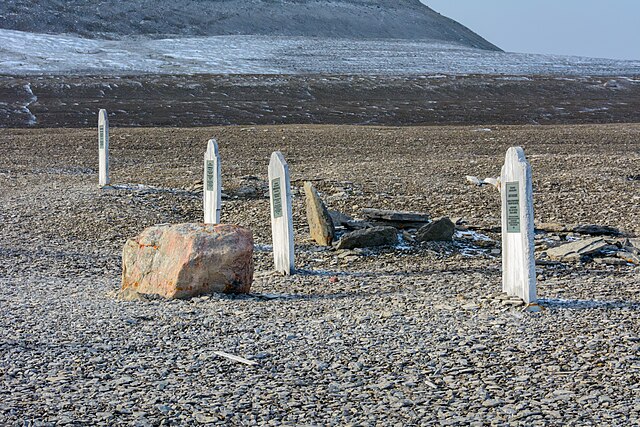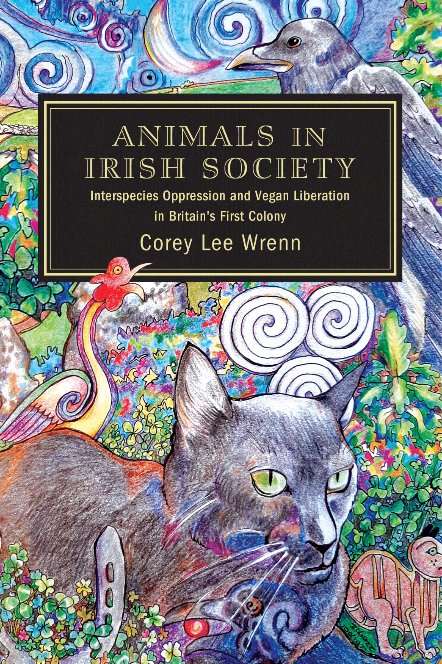
In my forthcoming book on the species politics of polar expeditions, I consider failed confrontations with nature and what this means for human supremacy. Nonhuman Animals were infamously slaughtered in great numbers to sustain European colonizers as they scrambled to survey and claim the vast lands of the north and south poles, but this mass slaughter was not always sufficient for survival. One of the greatest threats was the cold itself, of course, but extreme temperatures created the more pressing danger of sustaining very little flora or fauna. When domesticated animals conscripted for these expeditions were depleted and free-living animals became scarce, drastic measures were sometimes necessitated to sustain the mission.
Acts of cannibalism, I argue, offer one of the most profound challenges to human identity. With the Enlightenment and subsequent rise of humanism, Europeans gathered momentum in the construction of humanity as superior to and distinct from nature. Consuming animal protein (as much as was possible) became a means of solidifying humans (white European males, in particular) as an apex, “naturally” dominant species. Cannibalism, however, inverted this newly defined “natural” order. It marked a sign of weakness and failure, rather than strength and environmental prowess. With the collapse of cultural norms, distressed men of the polar expeditions found themselves vulnerable to many “laws” of nature, including that which defined the relationship of predator and prey.
Perhaps the most infamous occurrence of polar cannibalism is that which is now linked to the Franklin expedition in 1845. Funded by the British government, it was Royal Navy officer Sir John Franklin’s second attempt to find passage across northern Canada and establish a new, more efficient trade network. Franklin was not ignorant of the role of cannibalism in sustaining life during “unfavourable seasons.” Indigenous peoples who arrived upon Franklin’s camps in his first expedition in 1819 struggled with European diseases for which they had no resistance to the point at which procuring sustenance became prohibitively difficult. Franklin was then alerted that surviving natives have been “reduced to feed upon the bodies of their own family, to prevent actual starvation (1824: 51). He was shocked to learn that one such visitor to his camp was thought to have killed several people for this purpose, including her husband and other close relatives.
In this first expedition, his own team soon grappled with starvation as well. Some of the men survived by breaking down and consuming the preserved cows’ skins that comprised their boots. Although there are more similarities than differences between dried jerky and dried “leather,” the cultural constructions that distinguished “boots” from “meat” supported a façade of civility among British explorers. As their civility and mastery were challenged by the powers of the environment and the animal needs of the body, this cultured façade crumbled. The first expedition’s desperate consumption of its own shoes became a persistent punchline in Britain, and this humiliation would inform greater risk-taking in Franklin’s second attempt in 1845.
Native inhabitants reported that many of the men who perished in this earlier expedition were served as rations to remaining members of the party. This was not outside the realm of possibility, as half of the emaciated team fell victim to starvation and harsh environmental conditions. At least one of these men was a victim of murder by Franklin’s own account (Franklin 1824). Yet it would be the colossal failure of the second expedition along with the copious remains discovered by rescue parties and local Innuit populations that made the possibility of cannibalism more difficult to dismiss. Reception of this news in England drew immediate outrage. Franklin’s expedition was representative of the British Crown, and the perceived incivility and barbarousness of cannibalism troubled British superiority and delegitimized the aim of the mission. This was supposed to be the behavior of savage colonial subjects, not the nation’s heroic defenders. The involvement of Innuit peoples in reporting on surviving evidence, furthermore, certainly underscored the backlash.
For similar reasons, instances of cannibalism in other Western enterprises such as “whaling” and “slave-trading” have tended to go undiscussed. Woodard (2014) has noted that persons of color were often the first to be sacrificed in emergencies, being categorized as less-than-human and thus more consumable. Indeed, these politics of animality might be leveraged in mixed race parties to uphold the humanity, superiority, and survival of whites. Although the Franklin expedition interacted heavily with local Indigenous persons, it was ultimately an all-white group, particularly as the Innuit began to keep distance as the needs of the expedition overwhelmed their capacity to assist. Any case of cannibalism brings derogation in most human societies, but whites eating other whites perhaps brings a greater sense of perversion in a white supremacist society as it is truly “eating one’s own.” This would have been amplified at the height of British imperialism, an era of intense racial construction and social Darwinism. Subsequently, denying charges of cannibalism in colonial missions like that of the Franklin’s would be essential for preserving fragile ideologies of white superiority and Western “civilization.”

Until the late 20th century, whether or not cannibalism had taken place in the 1847 campaign remained ambiguous and unexamined, largely due to racist dismissals of Innuit reports. Additional osteoarcheological research in the late 20th and early 21st centuries contributed scientific verification, confirming local narratives. Some of the men’s bones were polished in localized areas of their surface, evidencing abrasive contact with cooking pots (these pots have also been recovered). Eating one another was not an all or nothing affair; there was a ritualistic element to the practice. Survivors carefully removed the heads and hands of their comrade’s remains, probably to remove their most humanistic features and more easily transform persons into “meat” (Mays and Beattie 2016).
Before an official confirmation of cannibalism could be made, archaeologists needed to rule out other potential causes for the damage observed in the human remains, including exposure to ice, wind, and carnivores. Human predation in the Franklin fiasco, in other words, aligns with “natural” predation. Franklin’s men, once heroic bastions of British civilization, had become dehumanized predators at best and, at worst, animalized prey. In either case, they had succumbed to the natural ecosystems they had attempted to dominate.
The use of pots, fire, and other ritualistic treatments of the men’s corpses does indicate a semblance of human civility, but the party’s complete surrender to nature and the collapse of their socially constructed boundaries marks the Franklin expeditions and other similar polar explorations as intriguing failures in the European civilization project. The Arctic and Antarctic marked the final “frontier,” spaces to be claimed for king and country, for capitalist gain, and imperial command. While these cases highlight the intersectional othering of Indigenous persons, Nonhuman Animals, and nature itself in the effort to naturalize a humanist hierarchy, the spatial resistance to white settler-colonialism ultimately exposes the vulnerability of human supremacist constructions, reanimalizing even the most humanized of men.
Works Cited
Franklin, J. 1824. Narrative of a Journey to the Shores of the Polar Sea, in the Years 1819-20-21-22. Volume II. 3rd edition. London: John Murray.
Mays, S. and O. Beattie. 2016. “Evidence for End-Stage Cannibalism on Sir John Franklin’s Last Expedition to the Arctic, 1845.” International Journal of Osteoarcheology 26 (5): 778-786.
Woodard, V. 2014. The Delectable Negro. New York: NYU Press.

Readers can learn more about postcolonial critical animal studies in my 2021 publication, Animals in Irish Society: Interspecies Oppression and Vegan Liberation in Britain’s First Colony.
Receive research updates straight to your inbox by subscribing to my newsletter.